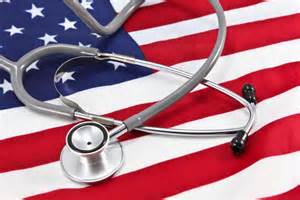THE ORGANIZATION AND FINANCING OF TODAY'S MEDICINE
當代醫療制度與資金投入
Patients, as well as their representatives in government, industry, and managed-care organizations, are concerned about the rising cost of medical care.
政府、產業、管理型醫療保險代表以及病患都對不斷增加的看病價格給予了高度關注。
The total bill for health care in America now rises at a rate of about 10 per cent per year, an increase that seems to continue unabated.
在美國,醫療開銷以每年10%的價格增長,而這一趨勢還將繼續下去。
Federal legislation instituting diagnosis-related groups (DRC's) has clearly moderated the rise of hospital costs, but physician costs continue to rise at an ever-increasing rate.
聯邦立法已經開設了診斷相關組,并已經降低了醫院開銷,但是內科醫生的開銷仍然在不斷增加。
Every student of medicine should ask if this is realistic.
每一名醫學學生都在問這是不是真的。
Is it sustainable? Is it defensible?
是可持續性的?還是有可解決的辦法?
What will be the limits?
范圍到底在哪?
Patients already ask, “Can I really afford the best doctors in the most prestigious practices, in the most famous medical centers?”
病患在問,“我能去最好的醫療中心,最好的科室,找最好的醫生看病嗎?”
“Can I afford to be referred to a subspecialist?”
我有錢去看那些專業醫師嗎?
“Can I afford to be out of work and in the hospital?”
我能支付得起不上班在醫院看病的開銷嗎?
“Can I afford to pay my rising insurance premiums?”
“我有錢支付不斷增長的保險嗎?”
“How much deductible on my insurance can I afford?”
“保險中的扣除條款我能支付得起多少?”
Worse yet, an increasing number of patients have to make choices between seeking medical and dental care and getting food, clothing, shelter, and other essentials of daily living.
更糟糕的是,有許許多多的病患不得不在看病,看牙和基本日常生活之間做出選擇。
These issues have become major concerns in American households and clearly represent one of the most disturbing weaknesses in our economy,
這些問題已經成為美國家庭關心的主要問題,并且是美國經濟中最令人擔心的薄弱環節,
of which now nearly 12 per cent ( by annual gross national product) is devoted to health care, up from 8 per cent in 1975.
醫療費用所占每年國民生產總值的比例已由1975年的8%增加到現在的12%。
Over the last two to three decades it has been a goal of the United States to promote ever increasing quality and cost-effectiveness of health care for all.
在過去的二三十年中,美國的目標就是要為全體民眾提供質量高,成本高效益的醫療制度。

Unfortunately, we have failed miserably.
不幸的是,我們遭遇了慘敗。
The USA spends more per capita on health care than any other nation in the world.
美國是全球個人醫療開銷最大的國家。
Yet in the major indices of health our population ranks nineteenth!
但是在主要醫療指數上,美國民眾排在了第19位!
At the same time we continue to see a wasteful maldistribution of physicians both by specialty and geographically and a growing number of medically indigent and medically uninsured people in our nation.
與此同時,無論在專業還是在地域上,內科醫生的分配不合理,沒有保險,沒錢看病的人數還在不斷增加。
Somehow, the costs of what we are trying to achieve—even though the goal is commendable — are not being placed in proper perspective by the medical profession, health-care managers, and representatives of the people in order to provide suitable care for all.
盡管我們要實現的目標值得贊揚,但是我們要實現的看病價格并沒有得到醫療人士、醫療衛生監管人士、以及代表的認真對待。
Unfortunately,in the present system the real needs of the populace are not always met by affordable services.
不幸的是,就目前的制度而言,大眾所能夠支付得起的醫療費用無法滿足人們的要求。
At the same time, overutilization of medical services may be the very engine that drives up the total cost of health care delivery.
與此同時,醫療服務的過度使用或許也是增加醫療費用的引擎。
With the passage of the Medicare program for the elderly and the Medicaid plan for the poor by Congress in 1965,
1965年,美國國會通過了補助老人的退休醫療福利,以及補助窮人的窮人醫療補助,
we had hoped as a nation that we were moving toward a more just and efiicient system.
我們希望美國的醫療系統能夠變得更加公正,更加有效。
In fact, the opposite has been the trend.
但是事實上,我們卻背道而馳。
This societal goal must now be readdressed reformulated, and restructed in terms of modern needs,
就社會需求來講,我們應該通過重組來實現社會目標,
reflecting fairly and fully measured cost-benefit ratios for every form of medical service.
全面反映醫療服務的成本與效益比例。
譯文屬可可英語原創,未經允許,不得轉載。











